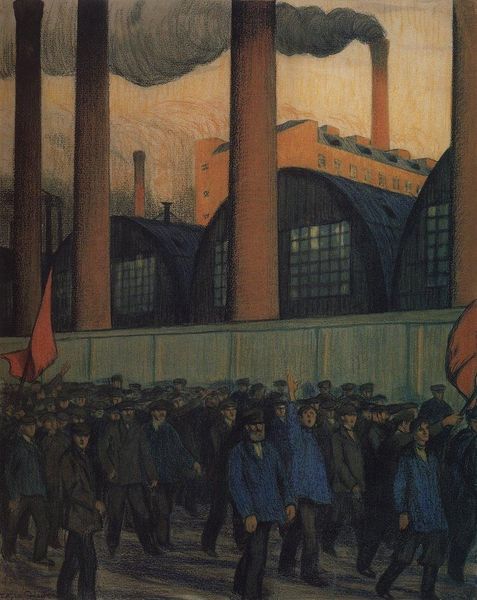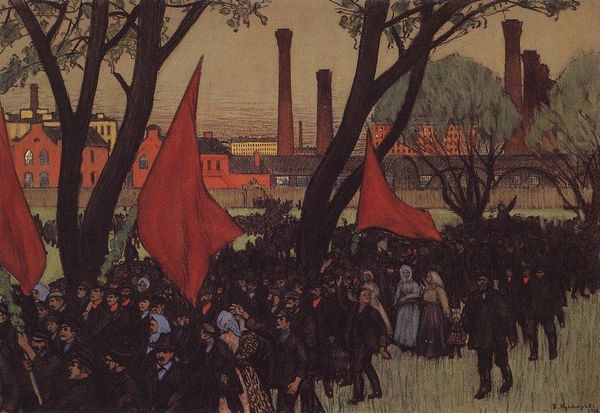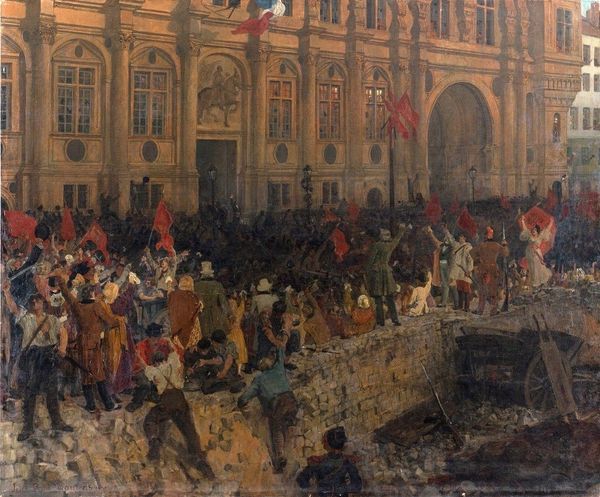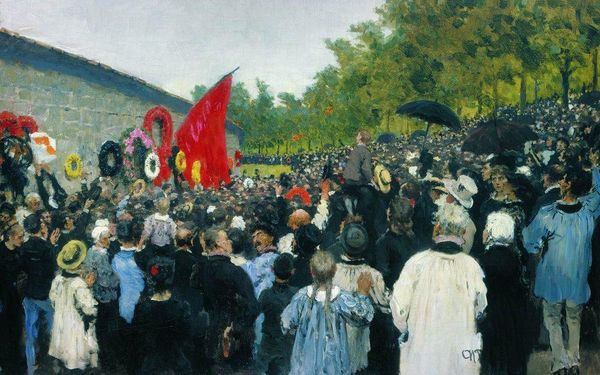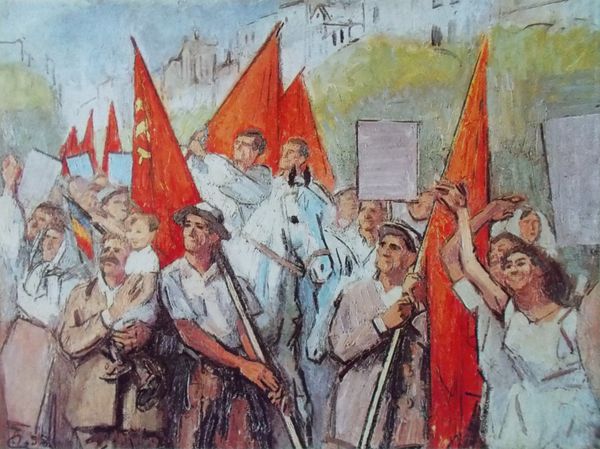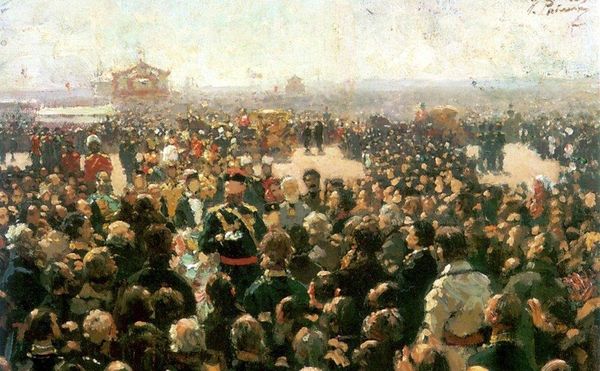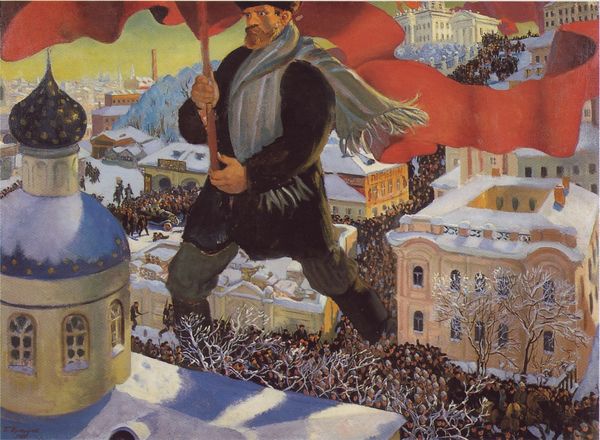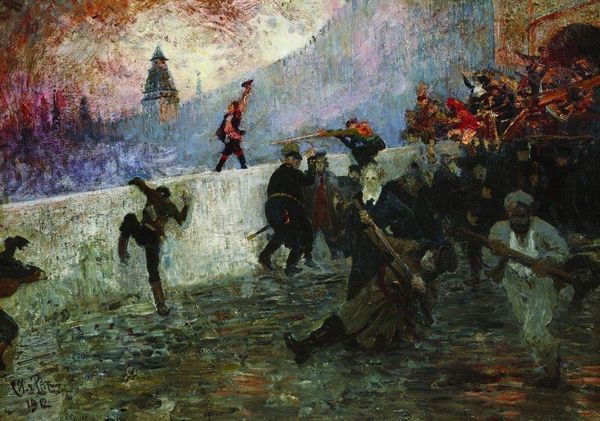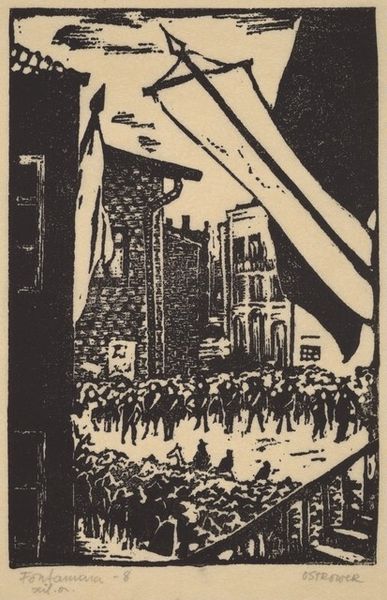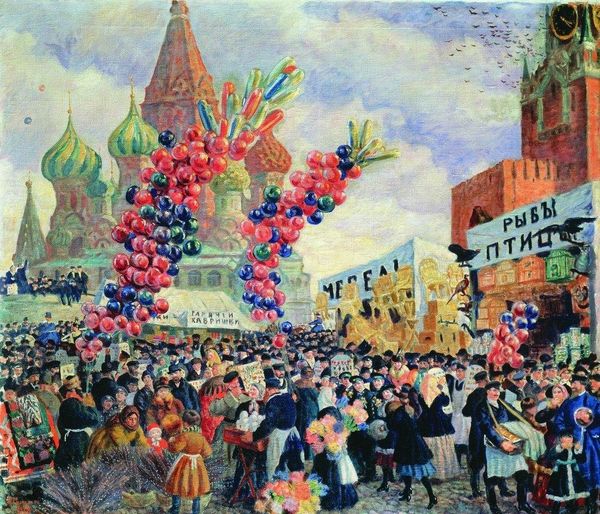
Festivities Marking the Opening of the Second Congress of the Comintern and Demonstration on Uritsky (Palace) Square in Petrograd on July 19th 1920 1921
0:00
0:00
painting, oil-paint
#
portrait
#
painting
#
oil-paint
#
figuration
#
social-realism
#
oil painting
#
group-portraits
#
russian-avant-garde
#
cityscape
#
history-painting
#
realism
Dimensions: 133 x 268 cm
Copyright: Public domain
Editor: Here we have Boris Kustodiev's oil on canvas from 1921, "Festivities Marking the Opening of the Second Congress of the Comintern and Demonstration on Uritsky (Palace) Square in Petrograd on July 19th 1920." There's a definite celebratory feel, and a strong sense of the masses gathered in this square. How do you interpret this work in light of its historical context? Curator: It's vital to understand this painting within the revolutionary fervor of the time. The Comintern, or Communist International, sought to spread communism globally, and this event was a key moment. The "masses" you mentioned weren't just a random gathering, they were participants in a historical project to create a new global order. What do you think Kustodiev is saying about the individual versus the collective here? Editor: That’s interesting. I hadn't considered the tension between the individual and the group. The people seem almost uniform in their support, unified under the red flags. It feels almost...idealized. Curator: Precisely. Think about whose perspectives might be missing or downplayed. Consider the social engineering and enforced consensus that often accompanied such revolutionary movements. Where do women fit into this narrative? Or those who dissented? Does the painting acknowledge the complex lived realities beyond the square? Editor: I see what you mean. It definitely projects an image of unified strength and forward progress, perhaps glossing over any internal conflicts or dissenting voices. So it’s not just a depiction, but also a piece of propaganda, intentionally or not? Curator: All art exists within a context of power. Understanding the socio-political moment helps us decode whose narrative is being amplified, and whose is being silenced. How might this understanding change your perception of the "celebratory feel" you described initially? Editor: It definitely complicates it. Now the “celebration” reads more as a carefully constructed image. I’m seeing the painting now as more of a historical document shaped by its time rather than just a snapshot. Curator: Exactly! And recognizing these forces helps us to critically assess its message, and question what it leaves unsaid.
Comments
No comments
Be the first to comment and join the conversation on the ultimate creative platform.
